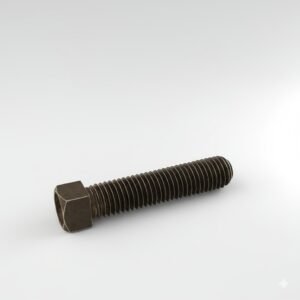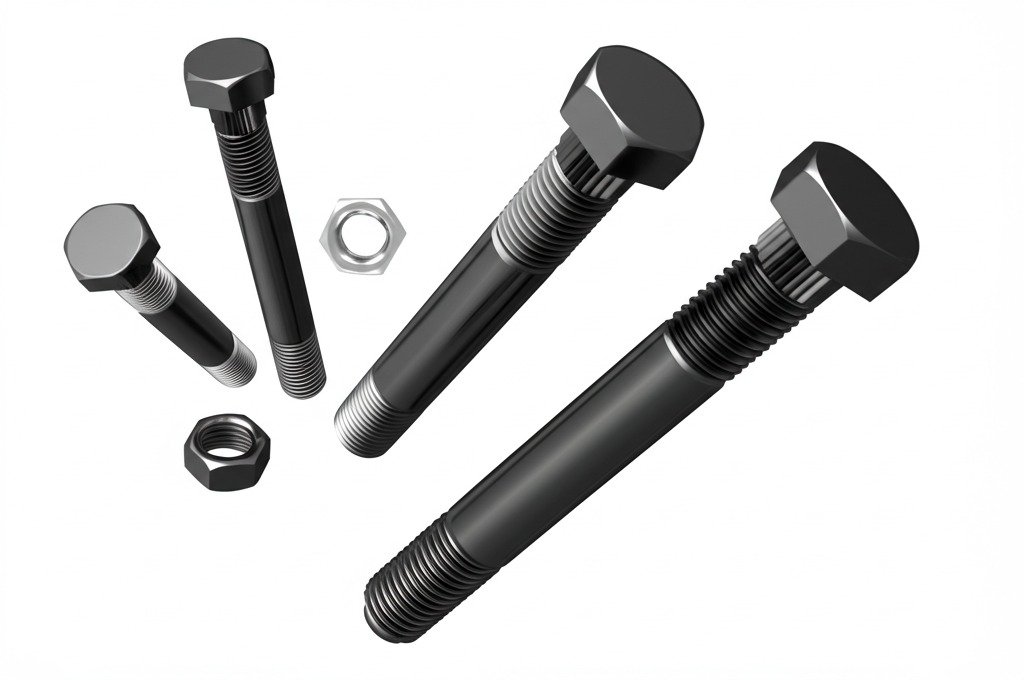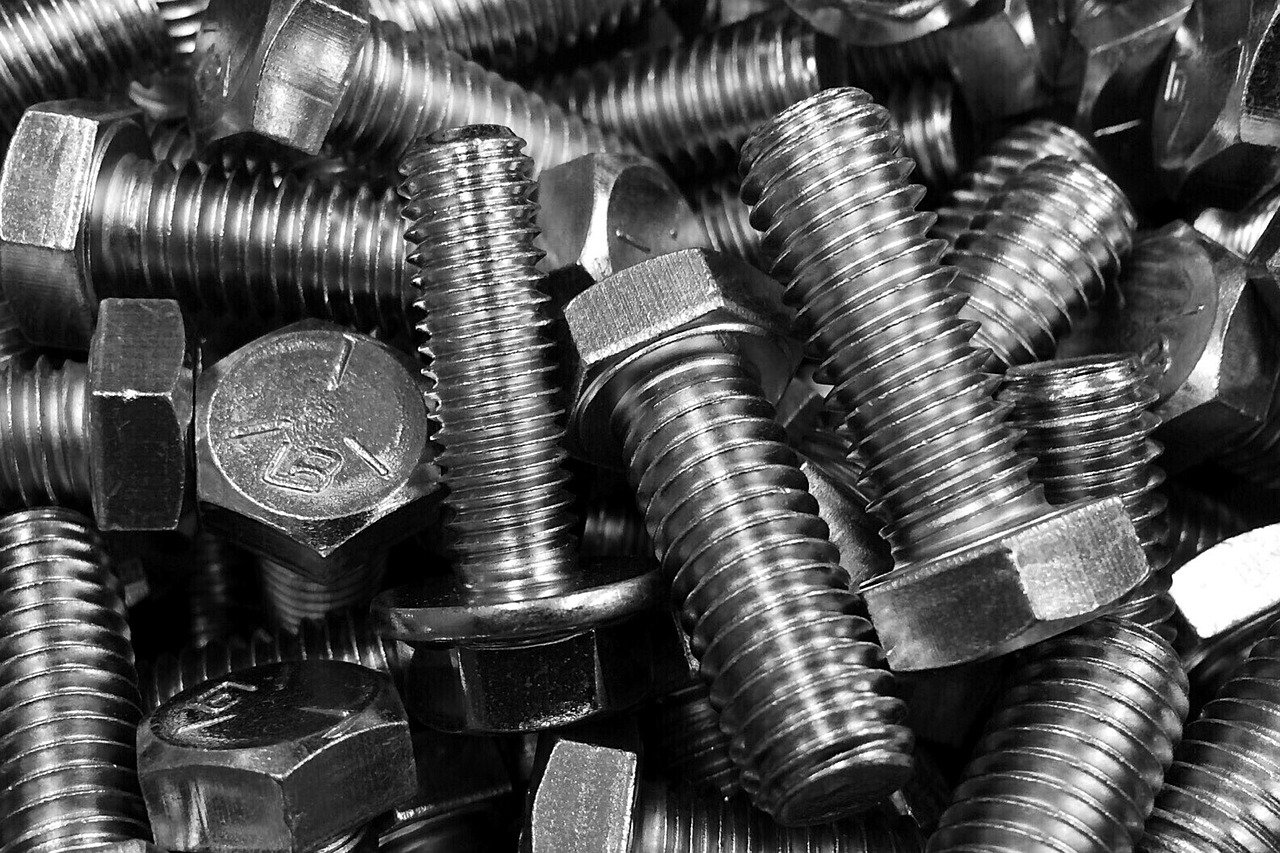By Nicolás Longo
(As an Amazon Associate we earn from qualifying purchases)
FAQs About Bolts: Comprehensive Answers to Your Questions
Bolts are among the most ubiquitous fasteners in construction, automotive, and industrial applications. This article answers commonly asked questions about bolts and covers topics that include how bolts are made, why bolts break or loosen, and even intriguing queries such as why bolts are pretensioned and whether bolts can be powder coated or recycled. Our aim is to provide a clear, data-driven, and practical reference for professionals and DIY enthusiasts alike. Throughout this guide, detailed insights, fun facts, and expert recommendations will help you better understand the engineering behind bolts and their critical role in ensuring structural integrity.
In the following sections, we address:
- Most Common Questions About Bolts
- Bolt Myths Debunked
- History of Bolts and Invention Timeline
By exploring these topics, we not only answer “bolts” related queries but also cover essential design, manufacturing, and recycling aspects. This comprehensive overview is designed with an informed, friendly tone that respects technical accuracy and aims for high conversion in affiliate marketing.
Most Common Questions About Bolts
Understanding the fundamentals of how bolts function is key for both beginners and seasoned professionals. Here, we answer several frequently asked questions.
How Are Bolts Made?
Bolts are manufactured using precise engineering processes. Raw material, often high-grade steel, is formed into a cylindrical shape before being cut to the desired length. Advanced machining creates thread patterns and finishes, and some bolts undergo heat treatment to enhance strength. Quality control is critical, ensuring each bolt meets standards from organizations like ASTM International.
Why Do Bolts Break?
Bolts can break due to overloading, fatigue, or improper installation. Excessive tensile forces or cyclic loads may cause microfractures that eventually lead to failure. Environmental factors such as corrosion and material defects also contribute. Studies by Engineering Toolbox confirm that proper torque and usage conditions are critical to prevent breakage.
Why Do Bolts Loosen?
One common issue is bolt loosening, which can occur when vibrations or cyclic loads disrupt the clamping force. Insufficient torque or the use of incompatible materials may also be factors. That is why many high-stress applications use locking mechanisms like thread-locking compounds or lock washers to mitigate these risks.
Why Are Bolts Pretensioned?
Bolts are often pretensioned to ensure a secure, stable clamping force once installed. By applying a specific preload during tightening, engineers reduce the risk of fatigue failure and ensure that the bolt maintains its grip under fluctuating loads. This process is essential in critical applications like bridge construction and industrial machinery.
When Are Bolts Tightened?
The timing of bolt tightening is crucial. Typically, bolts are tightened during assembly to secure components before they bear load. In some cases, re-tightening after a period of operation is recommended to compensate for any material settling or relaxation. This practice is highlighted in technical guides from the Society of Automotive Engineers (SAE).
Who Invented Bolts?
Bolts have an extensive history that dates back centuries. While it is difficult to attribute the invention to a single individual, the evolution of bolts is closely tied to advancements in metalworking during the Industrial Revolution. Historical records and patents from the 19th century showcase the development of standardized fasteners that paved the way for modern bolting technology.
Can Bolts Be Powder Coated?
Yes, many bolts can be powder coated. This process involves applying a dry powder that is then cured under heat to form a protective layer. Powder coating enhances corrosion resistance and offers aesthetic benefits. It is especially popular in outdoor applications and architectural projects. Refer to guidelines from Powder Coating Institute for more details.
Can Bolts Be Recycled?
Recycling bolts is not only possible but also encouraged, given that they are typically made from recyclable metals like steel. The recycling process involves melting the material and reforming it into new products, reducing overall production costs and minimizing environmental impact. Many manufacturers actively promote bolt recycling as part of their sustainability initiatives.
- Diameter: 1/4-Inch
- Length: 1-Inch
- Material: Steel

- 【Metric Flange Bolt Assortment】This is nice selection of metric flange head bolts of the most common lengths along with …
- 【10.9 Alloy and Black Galvanized】This flange bolt kit is crafted from 10.9 grade alloy steel with a durable black galvan…
- 【Time & Money Saver】Great bins for storage with a size chart on the inside and outside. Compared to the time it takes to…

- Model: M4x50mm Material: 304 Stainless steel Screw Length: 50mm/2″ Pitch: 0.7mm / 0.03″ Screw Head Dia: 8mm / 0.31″ Scre…
- Package Content: 20(+-2%)Pcsx Machine Screws; Product Name: Machine Screws Bolts ;Color: Silver Gray
- Pan head machine screws, Phillips drive. Metric machine screws for universal use

Bolt Myths Debunked
Over time, various myths have surrounded the performance and application of bolts. It is vital to separate fact from fiction for an informed perspective.
Myth 1: Bolts Are Inherently Inferior to Screws
Despite some common misconceptions, bolts and screws serve different purposes. Bolts are generally designed for applications requiring high strength and secure clamping force. Screws may offer convenience in assembly but often lack the robust performance of bolts under heavy loads.
Myth 2: Bolts Always Loosen with Vibration
While vibration can affect fasteners, modern bolts incorporate design elements such as pretensioning and locking mechanisms that significantly reduce the risk of loosening. The use of thread-lock compounds further debunks the myth that bolts are prone to accidental disengagement.
Myth 3: Bolts Are Not Suitable for Fine or Precision Applications
Contrary to this belief, bolts are used in high-precision settings such as aerospace and medical devices. Engineering advancements have led to the development of bolts with extremely tight tolerances and specialized coatings, making them ideal for applications requiring both strength and precision.
Myth 4: Reusing Bolts Is Always Unsafe
While reusing bolts can sometimes compromise performance if they have been deformed or corroded, many bolts are designed to be reusable. The key is proper inspection and adherence to manufacturer guidelines when considering bolt reuse, particularly in non-critical applications.
Myth 5: Powder Coating Diminishes Bolt Strength
Some fear that applying a powder coating might weaken a bolt, but research confirms that when properly applied, powder coating does not alter the mechanical properties of the fastener. Instead, it enhances durability and corrosion resistance without compromising structural integrity.
Through rigorous testing and expert reviews, these myths have been systematically debunked. A clear understanding of the actual performance characteristics of bolts is essential for ensuring safe and effective usage in various projects.
History of Bolts and Invention Timeline
The evolution of bolts is a fascinating journey that spans several centuries and reflects significant advancements in metallurgy and manufacturing.
Early Beginnings
The concept of using threaded fasteners can be traced back to ancient civilizations, where rudimentary forms of bolts were used to hold structures together. Although early bolts were simple and manually crafted, they laid the foundation for modern fasteners.
Industrial Revolution
The modern bolt emerged during the Industrial Revolution, when advancements in steel production and machining techniques allowed for mass production and standardization. Pioneering inventors refined the design of bolts, introducing features like standardized thread patterns and improved material quality. Patents and engineering treatises from this period document the transition from handcrafted fasteners to the precision-engineered bolts we rely on today.
20th Century Innovations
In the 20th century, the development of international standards further revolutionized bolt manufacturing. Organizations such as ASTM International and ISO established guidelines that have ensured consistent quality and performance across global markets. This period also saw the advent of specialized bolt coatings and new materials designed to withstand extreme conditions, which expanded the range of applications for modern bolts.
Recent Developments
Today, bolts are engineered with advanced composite materials and cutting-edge manufacturing techniques. Innovations in coatings—such as powder coating and galvanization—have extended the life of bolts in corrosive environments. Technological advances in computer-aided design and manufacturing have further improved the precision of bolt production, ensuring that every fastener meets rigorous performance standards.
Historical data and timelines from technical sources and academic publications provide a clear picture of how bolts have evolved. For example, research in the Journal of Materials Science highlights breakthroughs in alloy development that have enhanced the strength and durability of modern bolts. Understanding this history not only enriches our appreciation of bolts but also informs current engineering practices.
Advanced Insights and Comparative Data
Integrating historical evolution with current performance data, modern bolts are a synthesis of tradition and innovation. Detailed studies have shown that the strength, reliability, and versatility of bolts have evolved significantly over time. Engineers now have access to detailed performance metrics that compare aspects such as tensile strength, corrosion resistance, and fatigue life, providing a richer context for understanding how bolts function in complex systems.
- Material Evolution:
Advancements in metallurgy have produced bolts capable of handling higher loads and withstanding harsh environments. Data indicates that modern bolts exhibit improved performance compared to their historical counterparts. - Manufacturing Precision:
Innovations in manufacturing techniques have dramatically reduced tolerances and improved dimensional consistency. This precision allows bolts to perform reliably across various applications, from high-stress industrial assemblies to delicate electronic devices. - Sustainability Considerations:
With increasing emphasis on sustainability, recycling processes for bolts have become more efficient. Innovations in metal recovery and processing ensure that today’s bolts are environmentally responsible without compromising performance.
Comparative analyses from industry reports and research publications provide valuable benchmarks, enabling engineers to select the appropriate bolt for each application. This data-driven approach underscores why understanding bolts is fundamental for modern engineering.

Practical Tips and Expert Recommendations
When dealing with bolts, consider these practical recommendations to optimize performance and durability:
- Routine Inspection:
Regularly check bolts for signs of wear, corrosion, or loosening, especially in high-stress environments. - Proper Torque Application:
Use calibrated torque wrenches to ensure bolts are tightened to manufacturer specifications. - Adherence to Standards:
Follow industry standards (e.g., ASTM and ISO) to guarantee that the bolts you use meet quality requirements. - Utilize Protective Coatings:
Consider powder coating or galvanization to enhance bolt longevity in corrosive environments. - Maintenance Practices:
Keep detailed records of bolt usage and maintenance schedules to facilitate proactive replacements.
Experts from organizations like the Society of Automotive Engineers (SAE) and ASTM International emphasize the importance of these practices to maximize the lifespan and effectiveness of bolts.
Strategic Considerations for Bolt Usage
To ensure optimal performance, strategic planning is essential when incorporating bolts into any project. Consider these strategic approaches:
- Systematic Fastener Selection:
Evaluate the load, environmental conditions, and maintenance requirements before selecting a bolt. This systematic approach minimizes errors and enhances structural integrity. - Quality Supplier Partnerships:
Engage with trusted suppliers who provide consistent high-quality bolts, ensuring that you always receive products that meet precise specifications. - Innovative Fastening Solutions:
Leverage technological advances, such as computer-aided design and automated assembly, to improve the accuracy of bolt installation and monitoring. - Continuous Learning:
Keep updated with the latest research and standards. Technical publications, online seminars, and industry conferences can provide insights into emerging trends and best practices.
These strategies ensure that your use of bolts is both efficient and reliable, leading to safer and more cost-effective projects.
Final Analysis and Key Takeaways
A thorough exploration of bolts reveals not only their current technical specifications but also the fascinating evolution of these indispensable fasteners. By addressing questions about how bolts are made, why they break or loosen, and whether they can be powder coated or recycled, you gain a comprehensive understanding of bolt functionality.
Historical insights, combined with modern research and practical recommendations, provide a clear picture of why bolts play such a critical role in engineering, construction, and maintenance. This extensive guide reinforces that selecting the right fastener, implementing proper installation techniques, and adhering to maintenance practices can significantly enhance the safety and durability of any project.
From the inception of bolts to their state-of-the-art iterations today, knowledge about bolts empowers you to make informed decisions and optimize your engineering designs for both performance and longevity.
“As an Amazon Associate we earn from qualifying purchases.”













